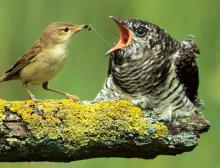What Are They Doing?
 Female wolf spider in Alaska
Female wolf spider in Alaska
The Arctic is warming faster than any other biome on the planet, which makes it critically important to understand the influence of warming on ecosystem processes in this region. While arctic species are all well adapted to living in extreme environments, it is unclear how different species will respond to the environmental shifts that accompany climate change (e.g. longer growing seasons and warmer temperatures). Stronger responses by some species within a community could lead to changes in the structure of the food web and its role in arctic ecosystems. In the Alaskan Arctic, wolf spiders are the largest and most abundant invertebrate predators. A shift in their ecological role could therefore have an important impact on the entire food web.
This project explored the role of wolf spiders within arctic communities and specifically, whether climate change is stimulating changes in these predators that could influence the structure and function of food webs. In particular, arctic warming could increase decomposition of the large amounts of carbon stored in permafrost soils. Increased decomposition would result in higher levels of atmospheric carbon dioxide and methane, which are heat-trapping greenhouse gases. Potential shifts in spider feeding ecology as a result of climate change could therefore have important and far-reaching consequences for arctic plant community dynamics and ecosystem processes. This research examined the extent to which arctic wolf spiders influence the structure and function of food webs and measured whether their impact on the community is changing with warming.
Where Are They?
 Tundra boardwalk at Toolik Field Station, Alaska
Tundra boardwalk at Toolik Field Station, Alaska
The research team flew to Fairbanks, Alaska and from there drove north to Toolik Field Station, in the foothills of the Brooks Range in northern Alaska. Toolik Field Station is operated by the Institute of Arctic Biology at the University of Alaska Fairbanks and has hosted hundreds of researchers and students every year since 1975.
Latest Journals

Amanda Koltz is a PhD candidate in ecology at Duke University under Dr. Justin Wright. Her research focuses on the relationship between community and ecosystem ecology (e.g. how species interactions can affect key ecosystem processes like decomposition and nutrient cycling). For her dissertation research, she is exploring how climate-induced changes in predatory spiders are influencing the structure and function of food webs in the Arctic. You can learn more about Amanda's research here.




